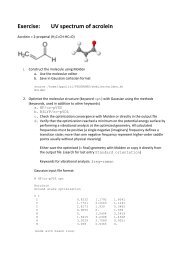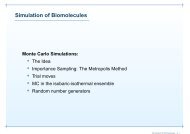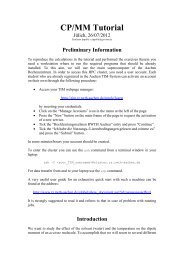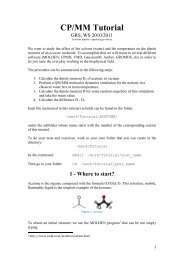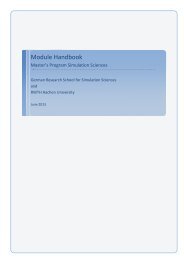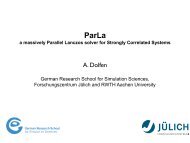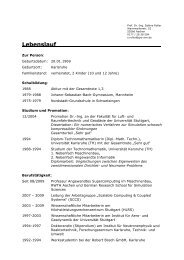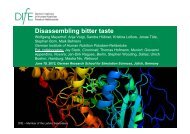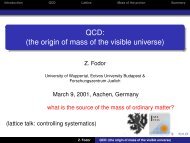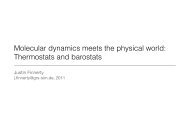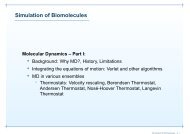Slides
Slides
Slides
You also want an ePaper? Increase the reach of your titles
YUMPU automatically turns print PDFs into web optimized ePapers that Google loves.
Ab initio MD<br />
• Car-‐Parrinello MD <br />
– Goal: <br />
• Combine the advantages of BO MD and EMD <br />
• EMD: No electronic minimiza4on <br />
• BO: Large 4me step <br />
– Solu4on: <br />
• Adiaba4c separa4on between fast electrons (quantum) and slow (classical) nuclei <br />
• Quantum/classical problem mapped to a purely classical 2-‐component problem with 2 <br />
separate energy scales (at the expense of losing the physical 4me informa4on of the <br />
quantum subsystem dynamics). <br />
• Molecular orbitals described as classical variables – decoupled from nuclei <br />
• Forces on nuclei as well as electrons as a deriva4ve of a suitable Lagrangian <br />
L CP<br />
=<br />
T<br />
<br />
I<br />
<br />
EKINC (T e )<br />
EKS (V<br />
1<br />
∑<br />
2 M <br />
<br />
e )<br />
<br />
<br />
I<br />
R 2 I<br />
+ ∑ µ φ i<br />
φ i<br />
− Ψ 0<br />
Ĥ e<br />
Ψ<br />
<br />
<br />
+ constraints<br />
0 <br />
<br />
I<br />
i<br />
<br />
<br />
orthonormality<br />
potential energy<br />
kinetic energy (nuclei + electrons/orbitals)<br />
• μ = fic44ous mass of the electrons



